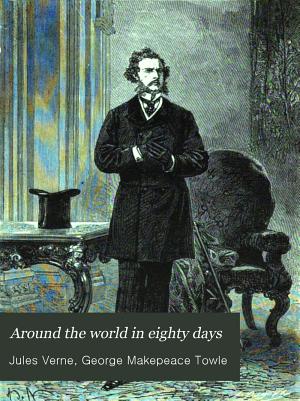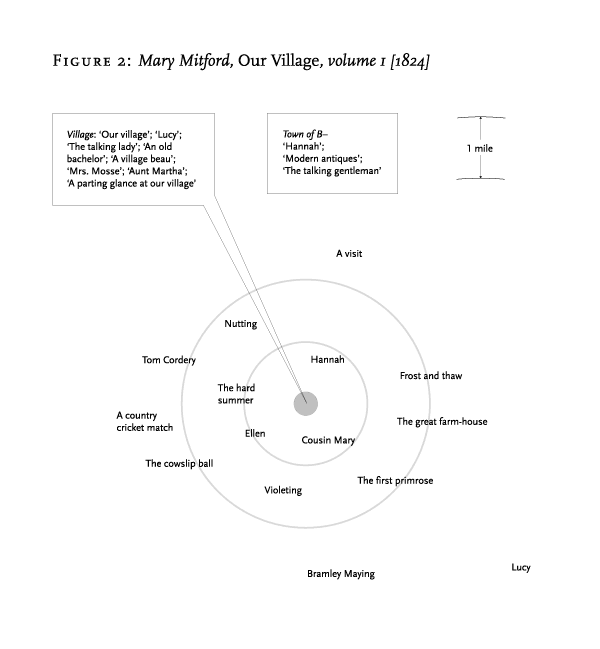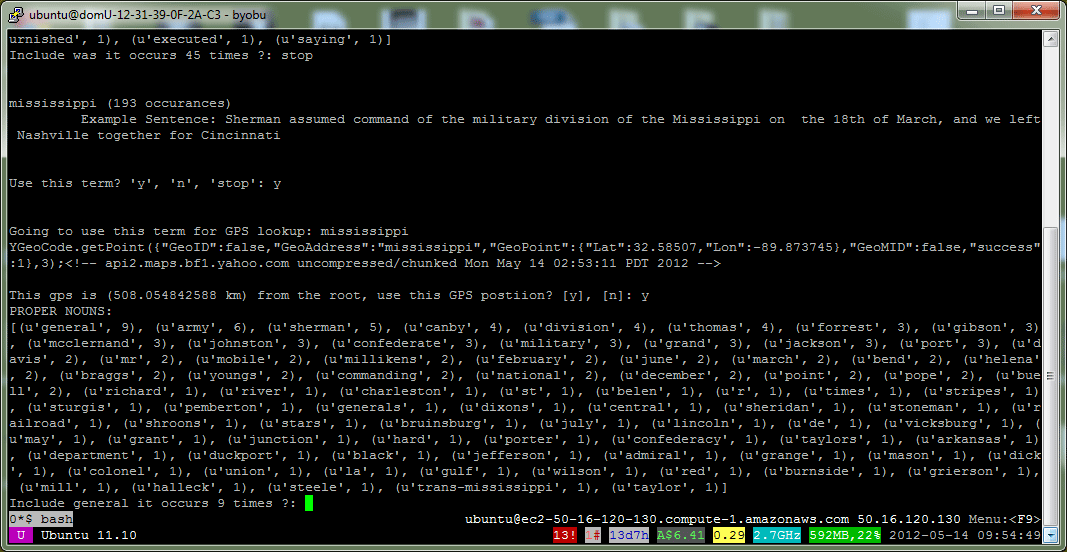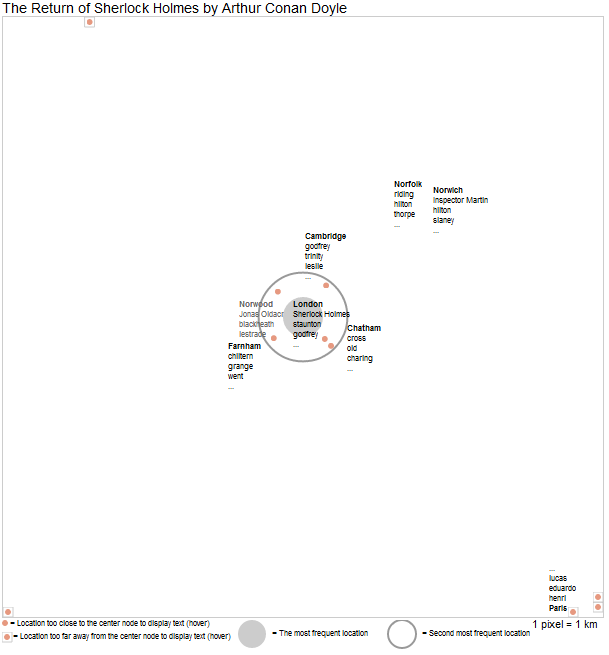




Sep, 01, 2012
While reading Franco Moretti’s Graphs, Maps, Trees: Abstract Models For A Literary History I came across his use of geometric (and geographic) radial maps to document the development of a small village. These village story maps lead Moretti to visualize the arrival of industrialization to the village among other events.

An example of the radial geographic visualization.
Moretti’s examples made me wonder if the same mapping technique could be applied to other literature outside the village story genera. To test this idea I built a semi-automated system that uses text extraction to pull out the possible geographic names. Using n-gram frequency the tool then pins frequent words to that location in order to provide some context surround what happened at that location. The system then uses GPS lookup to find and place that location in relation to each other. I say semi-automated because it still is too much noise to select the location and look them up automatically. I made a crude command line input system to present the results allowing for approval of the location, its GPS and the terms associated with it.

The result is a data file that can be read by my d3.js SVG mapping tool that plots the locations in a radial configuration similar to Moretti’s maps. The maps are to scale, although that scale changes (the geographic distance involved in Around the world in 80 days is quite different than The Dubliners). The inner circle is the most mentioned location, which becomes the center of the map. The outer ring represents the second most mentioned location.

The results are interesting. I feel they do not work as well as Moretti’s map but by visualizing the story geographically, useful patterns emerge that define the novel. Joyce’s Dubliners graphs to a small group of tightly related points. This makes sense as the novel is about the local neighborhoods and people. As opposed to Verne’s Around the world in 80 days which presents an elongated string of locations spanning thousands of miles.